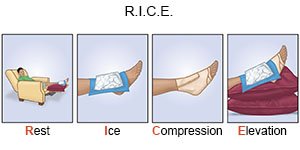Ecchymosis
Medically reviewed by Drugs.com. Last updated on Sep 23, 2025.
AMBULATORY CARE:
Ecchymosis
is a collection of blood under the skin. Blood leaks from blood vessels and collects in nearby tissues. This can happen anywhere just below the skin, or in a mucus membrane, such as your mouth. Ecchymosis may appear as a large red, blue, or purple area of skin. You may also have pain or swelling in the area. Signs and symptoms may move to nearby body areas.
Call your doctor if:
- You have new symptoms.
- Your bruise suddenly gets bigger and feels hard.
- The affected area does not improve within 2 weeks.
- You have ecchymosis around your eye and you are having trouble seeing.
- You have questions or concerns about your condition or care.
Related medications
Treatment
is usually not needed. Your healthcare provider may want you to have more tests to find the cause if you get ecchymosis often or it is painful. The medical condition causing ecchymosis may need to be treated. Your healthcare provider may stop or change a medicine that is causing your ecchymosis. The following may help relieve your symptoms:
 |
- Rest the area to help the tissues heal.
- Apply ice to the area to relieve pain and swelling. Ice can also help prevent tissue damage. Use an ice pack, or put crushed ice in a bag. Cover the ice pack or bag with a small towel before you apply it to your skin. Apply ice for 20 minutes every hour, or as directed.
- Elevate the affected area to reduce swelling, and to improve circulation. Prop the area on pillows to keep it elevated above the level of your heart. Do this as often as possible.
- NSAID medicines such as ibuprofen can help reduce pain and swelling. NSAIDs are available without a prescription. Ask your healthcare provider which medicine is right for you. Ask how much to take and how often to take it. Follow directions. NSAIDs can cause stomach bleeding and kidney damage if not taken correctly. If you take blood thinner medicine, always ask if NSAIDs are safe for you.
Treatment options
The following list of medications are related to or used in the treatment of this condition.
Follow up with your doctor as directed:
Write down your questions so you remember to ask them during your visits.
© Copyright Merative 2025 Information is for End User's use only and may not be sold, redistributed or otherwise used for commercial purposes.
The above information is an educational aid only. It is not intended as medical advice for individual conditions or treatments. Talk to your doctor, nurse or pharmacist before following any medical regimen to see if it is safe and effective for you.
Learn more about Ecchymosis
Treatment options
Care guides
Further information
Always consult your healthcare provider to ensure the information displayed on this page applies to your personal circumstances.
